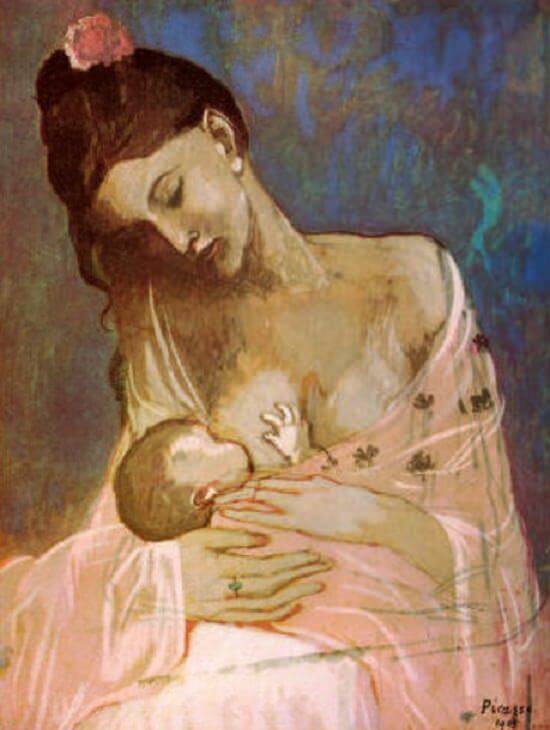Maternity, 1909 by Pablo Picasso
Picaso's Maternity belongs to the artist's neoclassical period, during which he developed a style reminiscent of classicism and used mythological images such as centaurs, minotaurs, nymphs, and fauns. He also created at
least a dozen pictures inspired by and dedicated to motherhood and the special relationship between mother and child. The women in these paintings resemble antique statues suddenly given life. They are solid and powerful, like
ancient goddesses, and are painted in quiet tones of gray and rose. They are all Great Mothers, connected to the earth.
Though some of Picasso's neoclassical mother-and-child canvases are not large in themselves, the effect of any one of them seems larger than life. Maternity shows a woman clothed in a classic white dress as she holds a
squirmy baby on her lap. She is so totally absorbed with her child that she does not know we are watching them. Their interaction is both animated and tranquil, evoking a tender lyricism and the calming spirit of motherhood.
Picasso's neoclassical period lasted until about 1925, when his art moved in still another direction.





















